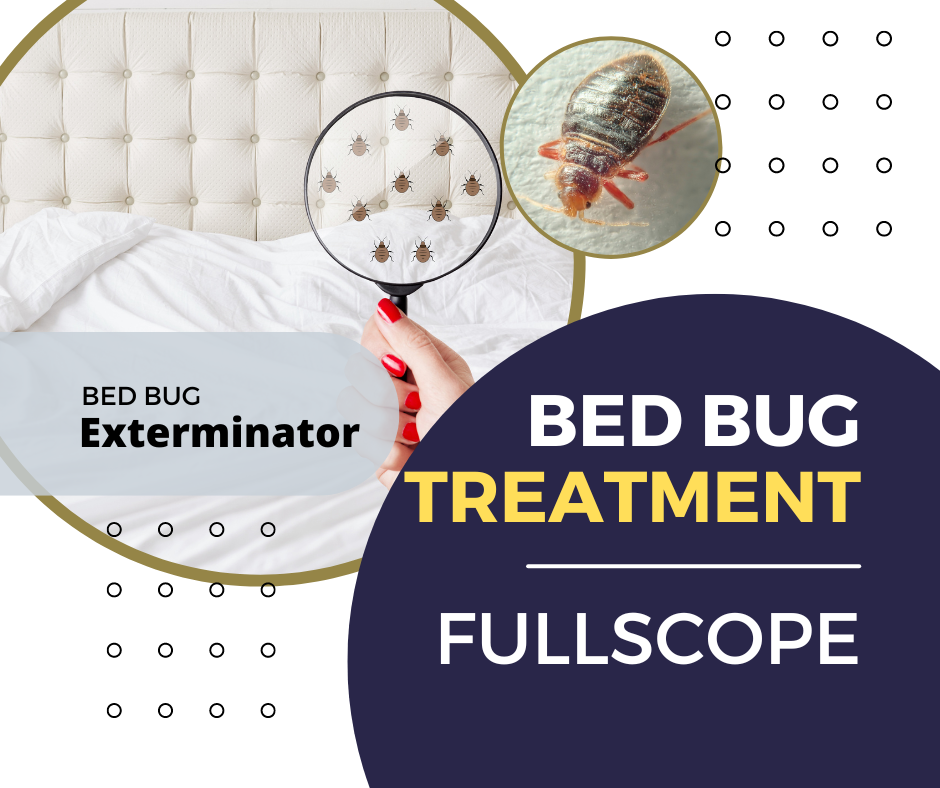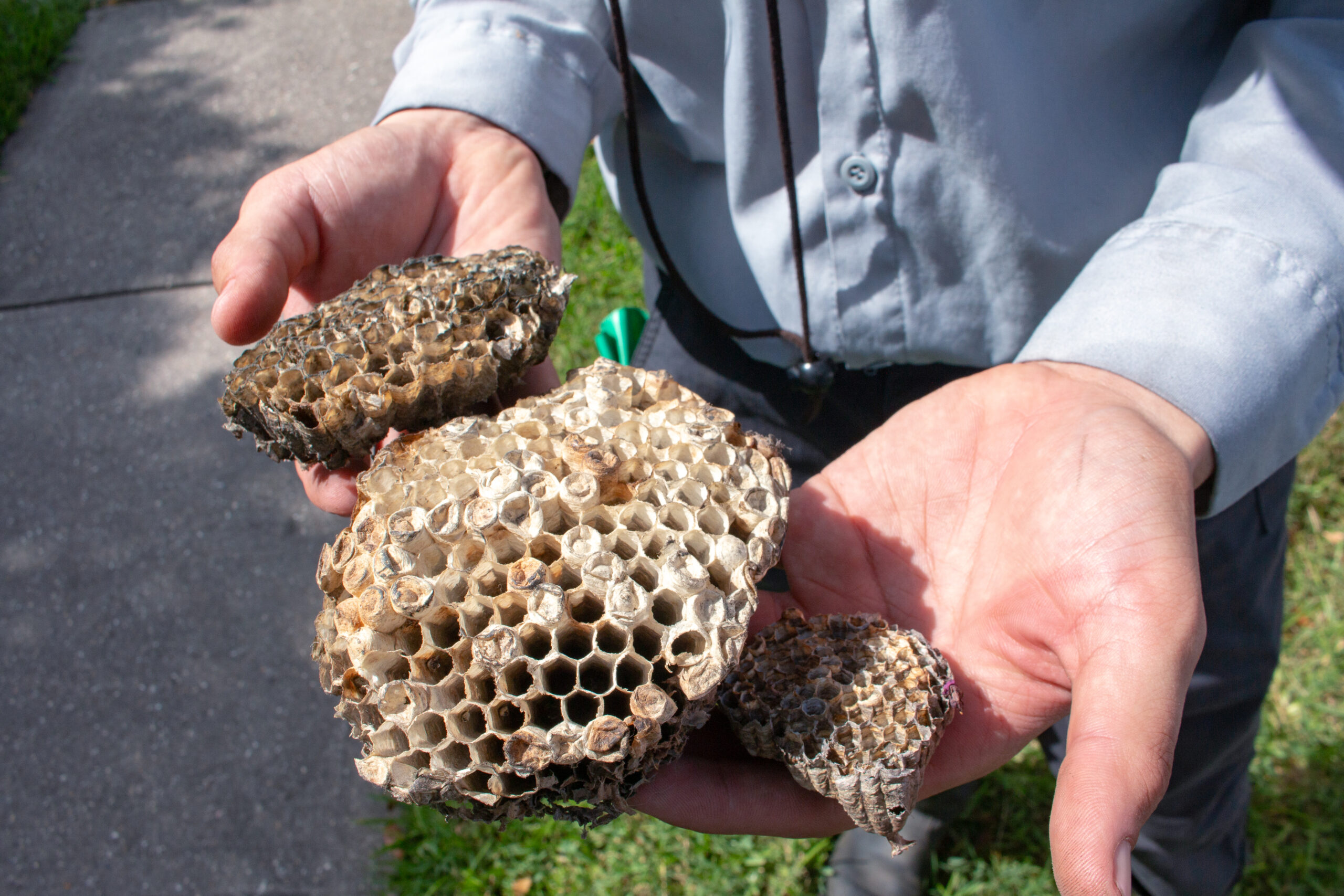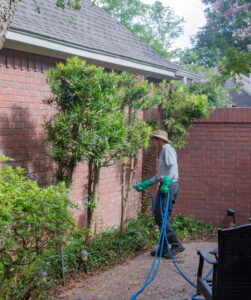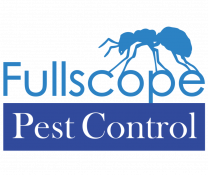
Key Highlights
- Bed bug infestations can happen to anyone and it’s important to know how to deal with them effectively.
- There are various treatment methods available for bed bug control, including professional treatments.
- Professional bed bug exterminators have the expertise and knowledge to eliminate bed bug infestations.
- DIY bed bug control methods may not be as effective as professional treatments.
- It’s crucial to take preventative measures to keep bed bugs at bay and prevent re-infestations.
Introduction
Bed bugs are a common pest problem that can cause a lot of distress and frustration. These tiny insects feed on the blood of humans and other animals, and their infestations can quickly spread throughout a home. Bed bug infestations are not a reflection of poor hygiene or cleanliness, as these pests can be easily transported into homes on clothing, luggage, or furniture.
When dealing with a bed bug infestation, it’s important to understand the signs of an infestation and the best methods for treatment. While there are DIY methods available for bed bug control, professional extermination is often the most effective way to eliminate these pests completely. Professional bed bug exterminators have the knowledge and expertise to identify and treat bed bug infestations using proven methods.
In this blog, we will explore the impact of bed bugs, how to identify infestations, the health risks associated with bed bugs, and the best strategies for detecting and eliminating bed bugs. We will also discuss the effectiveness of DIY bed bug control methods and the importance of seeking professional help for large or persistent infestations. By understanding the nature of bed bugs and the best methods for control, you can protect your home and eliminate these pests for good.
Understanding Bed Bugs and Their Impact
Bed bugs are small, wingless insects that feed exclusively on the blood of humans and other animals. They are approximately 1/5 inch long and have oval-shaped bodies that range in color from orange-red to brown-red. Bed bug eggs are about 1 mm in size and are whitish in color.
One of the challenges of dealing with bed bugs is their ability to hide in various places, making them difficult to detect. They are most commonly found in areas where people sleep, such as mattresses, box springs, and bed frames. Bed bugs can also hide in cracks and crevices, electrical outlets, and furniture near sleeping areas.
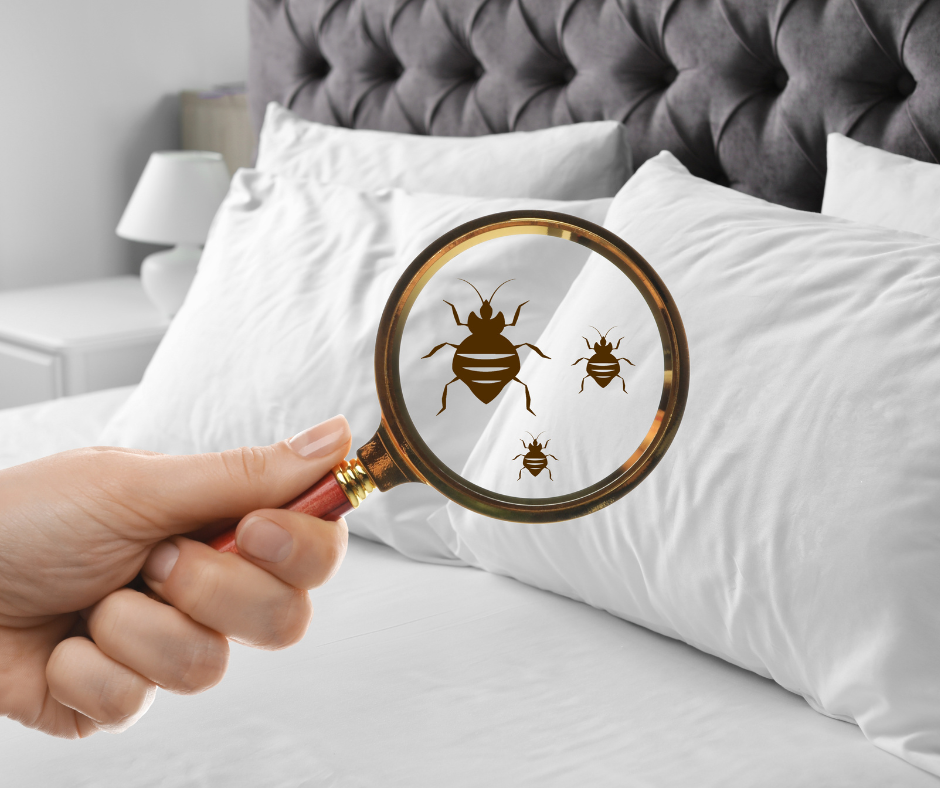
The most common signs of a bed bug infestation include:
- Bed bug bites: Bed bug bites are often characterized by itchy, red welts that appear in a line or cluster on the skin. These bites are usually painless and can be mistaken for other insect bites or skin conditions.
- Blood stains on bedding: When bed bugs feed, they leave behind small blood stains on sheets, pillowcases, or mattresses. These stains may appear as small dots or smears.
- Dark spots: Bed bug feces, also known as “bed bug droppings,” are dark spots that can be found on mattresses, bedding, or nearby furniture. These spots may be clustered or appear as small smears.
- Shed skins: As bed bugs grow and mature, they shed their exoskeletons. These shed skins are usually translucent and can be found in areas where bed bugs hide.
- Musty odor: Bed bugs release a musty odor that is often described as a sweet, moldy smell. This odor is typically more noticeable in severe infestations.
If you suspect a bed bug infestation, it’s important to take action immediately. Bed bugs reproduce rapidly and can quickly multiply, making the infestation more difficult to control. Seeking professional bed bug extermination services is recommended for effective treatment and elimination of bed bugs.
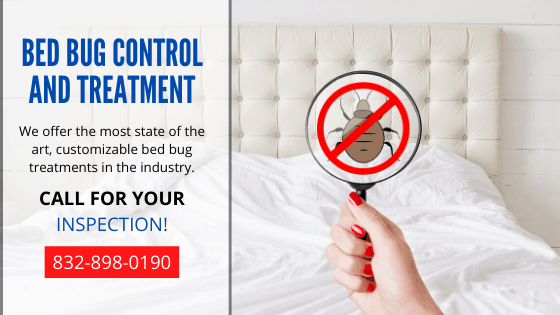
Identifying Bed Bug Infestations in Your Home
Identifying a bed bug infestation in your home can be challenging due to their ability to hide in small cracks and crevices. However, there are several signs that can indicate the presence of bed bugs.
One of the first places to check for bed bugs is your mattress. Examine the seams, tufts, and folds of the mattress, paying close attention to the edges and corners. Bed bugs often hide in these areas during the day and come out at night to feed.
In addition to the mattress, check the box spring and bed frame for signs of infestation. Bed bugs can hide in the cracks and crevices of these structures, so it’s important to inspect them thoroughly.
Bed bugs can also hide in other areas of the room, such as electrical outlets, baseboards, and nearby furniture. Inspect these areas carefully, looking for signs of bed bug activity, such as dark spots (fecal stains), shed skins, or live bugs.
It’s important to note that bed bugs are not limited to the bedroom. They can also infest other areas of the home, such as couches, chairs, and even clothing. If you suspect a bed bug infestation, it’s recommended to seek professional bed bug extermination services to effectively eliminate the infestation.
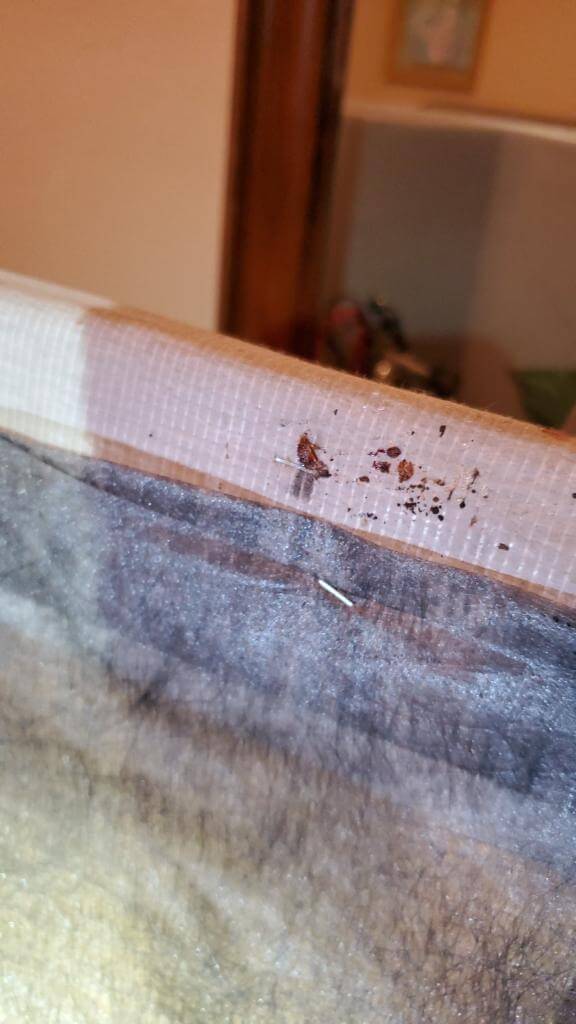
Health Risks and Damages Caused by Bed Bugs
While bed bugs are not known to transmit diseases, their bites can cause a range of health issues. Many people have an allergic reaction to bed bug bites, resulting in redness, itching, and swelling at the site of the bite. In some cases, bed bug bites can lead to skin infections or secondary infections if the bites are scratched excessively.
Bed bug bites can also have a negative impact on mental health. The presence of bed bugs and the constant fear of being bitten can cause anxiety, stress, and sleep disturbances. People who are already prone to anxiety or mental health conditions may experience an exacerbation of their symptoms due to the presence of bed bugs.
In addition to the health risks, bed bugs can also cause damage to your home. They can stain bedding and furniture with their fecal spots and may leave behind a musty odor. Infested mattresses and furniture may need to be discarded if the infestation is severe.
If you suspect a bed bug infestation in your home, it’s important to take action promptly to prevent further health risks and damages. Seek professional bed bug extermination services to effectively eliminate the infestation and protect your health and home.
Proven Strategies for Detecting Bed Bug Presence
When it comes to detecting bed bugs in your home, there are several proven strategies you can use. One technique is to conduct a thorough inspection of your home, paying close attention to areas such as electrical outlets, couch cushions, and bed frames. Bed bugs are skilled at hiding in small crevices, so it’s important to be meticulous in your search. Additionally, using tools and equipment such as a magnifying glass, vacuum cleaner, and plastic bag can aid in the detection process. By implementing these strategies, you can identify the presence of bed bugs and take appropriate action.
Inspection Techniques for Different Areas of Your Home
When inspecting your home for bed bugs, it’s essential to cover all areas where they may hide. Here are some inspection techniques for different areas of your home:
- Electrical Outlets: Remove the cover plates of electrical outlets and inspect for any signs of bed bugs or their shed skins.
- Couch Cushions: Lift and inspect each cushion thoroughly, paying close attention to the seams and folds.
- Bed Frame: Examine the bed frame, including the headboard, footboard, and side rails. Bed bugs often hide in cracks and crevices in the frame.
- Mattress and Box Spring: Inspect the seams, tufts, and folds of the mattress and box spring, as these are common hiding spots for bed bugs.
- Other Furniture: Check any nearby furniture, such as nightstands, dressers, or chairs, especially if they are in close proximity to the bed.
By conducting a comprehensive inspection using these techniques, you can identify the presence of bed bugs and take appropriate measures for treatment.
Tools and Equipment Used in Bed Bug Detection
In the process of detecting bed bugs, various tools and equipment can be used to aid in the inspection. These tools help in locating and identifying bed bugs and their eggs. Here are some commonly used tools and equipment:
- Magnifying Glass: A magnifying glass can help you get a closer look at small bugs or eggs that may be difficult to spot with the naked eye.
- Vacuum Cleaner: A vacuum cleaner with a crevice attachment can help remove bed bugs from cracks and crevices. Be sure to dispose of the vacuum bag immediately after use to prevent the bugs from escaping.
- Plastic Bag: Use a plastic bag to collect any evidence of bed bugs, such as bugs, eggs, or shed skins. This helps in proper disposal and prevents the spread of the infestation.
By using these tools and equipment during the detection process, you can effectively identify the presence of bed bugs and take appropriate action for treatment.
Need a bed bug exterminator? We can help.
If you’re dealing with a bed bug infestation and need professional help, FullScope is here to assist you. Our team of experienced bed bug exterminators can create a customized treatment plan to effectively eliminate bed bugs from your home. Here’s why you should consider hiring a professional exterminator:
- Expertise: Professional exterminators have the knowledge and experience to effectively identify and treat bed bug infestations. They stay updated on the latest treatment methods and can provide the most effective solutions.
- Treatment Plan: A professional exterminator will create a customized treatment plan tailored to your specific situation. This ensures that all areas of your home are treated and that the infestation is completely eradicated.
- Best Way: Professional treatments are often the best way to deal with bed bug infestations, especially for large or persistent infestations. DIY methods may not be as effective in these cases, and professional treatments offer the most efficient and reliable solution.
By hiring a professional exterminator, you can trust that your bed bug problem will be handled effectively and efficiently. Don’t hesitate to reach out to FullScope for professional bed bug extermination services.
DIY Bed Bug Control: Is It Effective?
While DIY bed bug control methods may be tempting, it’s important to understand their effectiveness. DIY methods can be useful for small, localized infestations or as a temporary solution while waiting for professional treatment. However, DIY methods may not be as effective for large or persistent infestations. Bed bugs are resilient pests that can hide in small crevices and reproduce quickly. It’s crucial to address the infestation at its source to ensure complete eradication. If you’re dealing with a significant bed bug infestation, it’s best to seek professional help for effective and long-lasting results.
Common Home Remedies and Their Efficacy
When it comes to DIY bed bug control, there are several common home remedies that people often try. While these remedies may have some efficacy, it’s important to understand their limitations. Here are some common home remedies and their efficacy in controlling bed bugs:
- Diatomaceous Earth: Diatomaceous earth is a fine powder made from the fossilized remains of diatoms. It is believed to absorb the waxy outer layer of bed bugs, causing them to dehydrate and die. While diatomaceous earth can be effective in killing bed bugs, it may not eliminate the entire infestation.
- Essential Oils: Certain essential oils, such as lavender, tea tree, and peppermint oil, are believed to have insecticidal properties. However, the effectiveness of essential oils in controlling bed bugs is limited, and they may only provide temporary relief.
- Hot Water: Washing infested bedding and clothing in hot water can help kill bed bugs and their eggs. However, hot water alone may not be sufficient to eliminate a bed bug infestation, especially if the infestation has spread to other areas of the home.
While these home remedies may have some effect on bed bugs, it’s important to remember that they are not a comprehensive solution. For effective and long-lasting results, it’s best to seek professional bed bug control services.

Preventative Measures to Keep Bed Bugs at Bay
Prevention is key when it comes to keeping bed bugs at bay. Here are some preventative measures to help you avoid bed bug infestations:
- Seal Cracks: Seal any cracks or crevices in your home, including those in walls, baseboards, and furniture. This helps eliminate potential hiding spots for bed bugs.
- Vacuum Bag: When vacuuming, be sure to seal and dispose of the vacuum bag or empty the canister into a sealed plastic bag immediately afterward. This prevents any captured bed bugs from escaping and spreading.
- High Heat: Use high heat to kill any bed bugs or eggs that may have come into contact with infested items. Wash and dry bedding, clothing, and other washable items on the highest heat setting recommended for the fabric.
By implementing these preventative measures, you can reduce the risk of bed bug infestations in your home and maintain a pest-free environment.
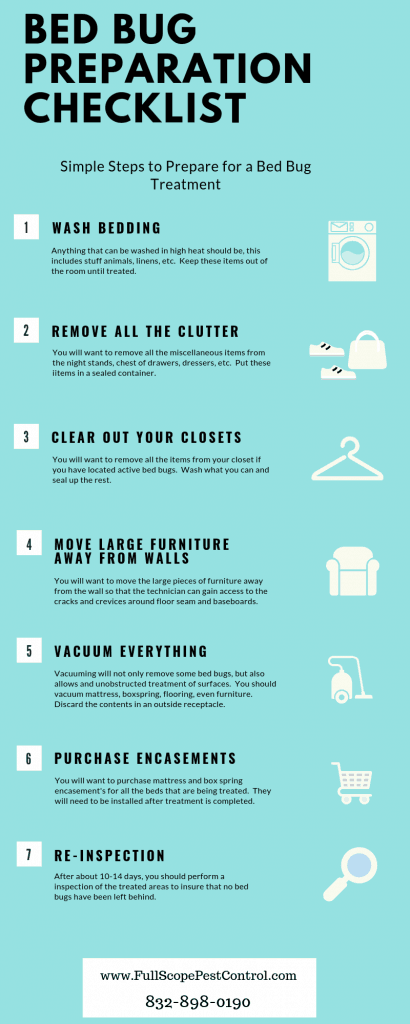
Don’t waste time with DIY bed bug removal
When dealing with a bed bug infestation, it’s crucial not to waste time with DIY removal methods. Bed bugs are resilient pests that can quickly multiply and spread, making it challenging to eradicate them completely without professional help. Here’s why you should consider hiring a professional pest control company for bed bug removal:
- Expertise: Professional pest control companies have the knowledge and experience to effectively identify the extent of the infestation and provide appropriate treatment options. They stay updated on the latest bed bug control methods and can use the most effective techniques.
- Large Infestation: DIY methods may work for small, localized infestations, but for large infestations, professional intervention is necessary. Professional pest control companies have the resources and expertise to handle large-scale infestations effectively.
- Effective Methods: Professional pest control companies use proven and effective methods to eliminate bed bugs. They have access to specialized tools, equipment, and treatments that may not be available to homeowners.
By hiring a professional pest control company, you can save time and ensure that your bed bug problem is addressed comprehensively. Don’t waste time and effort with ineffective DIY methods when professional help is readily available.
Professional Bed Bug Extermination Methods
Professional bed bug extermination methods involve the use of various techniques and treatments to eliminate bed bugs. Here are some common methods used by professional pest control companies:
- Chemical Treatments: Professional exterminators may use chemical treatments to target and eliminate bed bugs. These treatments are often applied to infested areas and can effectively kill bed bugs at different stages of their life cycle.
- Heat Treatment: Heat treatment involves raising the temperature in infested areas to a level that is lethal to bed bugs. This method can effectively penetrate cracks and crevices, ensuring complete elimination of bed bugs and their eggs.
By using a combination of these methods, professional exterminators can create a customized treatment plan to target the specific needs of your bed bug infestation. This ensures that all areas are treated effectively and that bed bugs are eradicated.
Chemical Treatments and Their Safety Concerns
Chemical treatments are commonly used by professional pest control companies to target and eliminate bed bugs. While these treatments can be effective, there are some safety concerns to consider. It’s important to choose a reputable pest control company that uses approved and safe chemicals for bed bug control. Professional exterminators are trained to use these chemicals safely and can take appropriate precautions to protect you and your family during the treatment process. It’s also important to follow any instructions or guidelines provided by the pest control company to ensure the safety of everyone involved. By working with a professional pest control company, you can have peace of mind knowing that the chemicals used are safe and that the treatment will be conducted in a responsible manner.
Heat Treatment: A Non-Chemical Approach
Heat treatment is a non-chemical approach used by professional pest control companies to eliminate bed bugs. This method involves raising the temperature in infested areas to a level that is lethal to bed bugs. Here’s how heat treatment works:
- Heat Treatment Process: Professional exterminators use specialized equipment to raise the temperature in infested areas to a range of 120 to 140 degrees Fahrenheit. This heat penetrates cracks and crevices, ensuring that all bed bugs and their eggs are exposed to lethal temperatures.
- Deep Freeze: In some cases, professional exterminators may also use deep freeze techniques to eliminate bed bugs. This involves lowering the temperature in infested areas to a level that is lethal to bed bugs.
Heat treatment is an effective non-chemical approach for bed bug control. It can reach all areas of infestation and provide thorough elimination of bed bugs and their eggs. By using heat treatment, professional exterminators can ensure complete eradication of bed bugs without the use of chemicals.
Preparing Your Home for Bed Bug Treatment
Preparing your home for bed bug treatment is an important step to ensure the effectiveness of the treatment process. Here are some steps to take before the extermination process begins:
- Treatment Preparation: Follow any instructions provided by the pest control company regarding treatment preparation. This may include washing and bagging clothing and bedding, removing clutter, and vacuuming infested areas.
- Special Attention: Pay special attention to areas where bed bugs are commonly found, such as the bed, furniture, and cracks and crevices. Remove any personal items, such as toys or electronics, that may interfere with the treatment process.
- Small Area: If the infestation is localized to a specific area, such as a single room, focus on preparing that area for treatment. Close off the room and seal any cracks or crevices to prevent bed bugs from escaping.
By properly preparing your home for bed bug treatment, you can ensure that the extermination process is effective and that all areas of infestation are treated thoroughly.
Steps to Take Before the Extermination Process Begins
Before the extermination process begins, it’s important to take certain steps to prepare your home. Here are some steps to consider:
- Treatment Preparation: Follow any instructions provided by the pest control company regarding treatment preparation. This may include washing and bagging clothing and bedding, removing clutter, and vacuuming infested areas.
- Special Attention: Pay special attention to areas where bed bugs are commonly found, such as the bed, furniture, and cracks and crevices. Remove any personal items, such as toys or electronics, that may interfere with the treatment process.
- Small Area: If the infestation is localized to a specific area, such as a single room, focus on preparing that area for treatment. Close off the room and seal any cracks or crevices to prevent bed bugs from escaping.
By taking these steps, you can ensure that the extermination process is effective and that all areas of infestation are addressed. Proper preparation is crucial for the success of the treatment and eradication of bed bugs.
How to Protect Your Belongings During Treatment
During the bed bug treatment process, it’s important to protect your belongings to prevent reinfestation. Here are some steps you can take to protect your belongings:
- Plastic Bag: Place any clothing or bedding that may have come into contact with bed bugs in sealed plastic bags. This prevents the spread of bed bugs and allows for easy transportation to the washing machine.
- Safe Place: Store personal items that are not infested in a safe place, away from the treatment area. This minimizes the risk of bed bugs attaching to these items and spreading to other areas of your home.
- Personal Items: Take special care with personal items such as electronics, books, and toys. Inspect these items for any signs of bed bugs and clean them thoroughly before returning them to their original location.
By taking these precautions, you can protect your belongings and minimize the risk of reinfestation during the bed bug treatment process.

The FullScope Approach to Bed Bug Elimination
At FullScope, we take a comprehensive approach to bed bug elimination. Our goal is to provide effective and long-lasting solutions for your bed bug problem. Here’s what sets us apart:
- Expertise: Our team of experienced pest control professionals has extensive knowledge and expertise in bed bug control. We stay updated on the latest treatment methods and use the most effective techniques to eliminate bed bugs.
- Customized Treatment: We understand that every bed bug infestation is unique. That’s why we create a customized treatment plan tailored to your specific situation. This ensures that all areas of infestation are treated thoroughly and that the infestation is completely eradicated.
- Pest Management: We take a holistic approach to pest management, focusing not only on eliminating the current infestation but also on preventing future infestations. We provide guidance on preventative measures and offer ongoing support to ensure that your home remains bed bug-free.
By choosing FullScope for your bed bug control needs, you can trust that you’re receiving the highest quality service and the most effective solutions. Our team is dedicated to providing exceptional customer satisfaction and delivering results that exceed your expectations.
Why Choose FullScope for Your Bed Bug Problems
There are several reasons why you should choose FullScope for your bed bug problems. Here’s what sets us apart:
- Professional Treatments: We provide professional treatments that are effective in eliminating bed bugs from your home. Our team of experienced pest control professionals is trained to identify and target bed bug infestations using proven methods.
- Customer Satisfaction: At FullScope, customer satisfaction is our top priority. We strive to exceed your expectations by providing exceptional service and delivering results that meet your needs.
- Treatment Options: We offer a range of treatment options tailored to your specific situation. Whether you’re dealing with a small localized infestation or a larger-scale problem, we have the expertise and resources to address your bed bug problem effectively.
By choosing FullScope, you can trust that your bed bug problem will be handled with the utmost care and professionalism. We are committed to providing the highest quality service and ensuring that your home is bed bug-free.
Post-Treatment: Ensuring Bed Bugs Don’t Come Back
After the bed bug treatment is complete, it’s crucial to take preventative measures to ensure that bed bugs don’t come back. Here are some steps you can take:
- Post-Treatment Inspection: Conduct a thorough inspection of your home to ensure that all infested areas have been treated and that there are no signs of remaining bed bugs.
- Vacuuming and Cleaning: Vacuum regularly to remove any potential bed bugs or eggs that may have been missed during the treatment process. Clean and declutter your home to eliminate potential hiding spots for bed bugs.
- Preventative Measures: Take preventative measures such as sealing cracks and crevices, using bed bug-proof mattress and pillow covers, and being cautious when traveling to prevent bed bugs from entering your home.
By implementing these post-treatment measures, you can minimize the risk of bed bug reinfestation and maintain a bed bug-free environment in your home.
Conclusion
Bed bugs can pose serious health risks and damage to your home. Detecting their presence is crucial for effective control. While DIY methods may seem cost-effective, professional extermination is often more reliable and efficient in eliminating bed bugs. FullScope offers expert bed bug elimination services, including safe chemical treatments and non-chemical heat treatments. Trust us to protect your home and belongings throughout the process. We prioritize post-treatment measures to prevent re-infestation. If you suspect bed bugs, don’t hesitate to reach out for our specialized assistance in ensuring a bed bug-free environment for you and your family.
Frequently Asked Questions
How do I know if the bed bugs are completely gone?
To ensure that bed bugs are completely gone, conduct a thorough visual inspection of your home. Use bed bug interceptors to monitor bed bug activity and keep an eye out for any signs of bed bugs, such as bites or fecal spots. If you don’t see any signs of bed bugs for several weeks, it’s a good indication that they are gone.
Can bed bugs develop resistance to treatments?
Yes, bed bugs can develop resistance to certain treatments over time. That’s why it’s important to use a combination of different treatment methods and work with a professional pest control company that can provide effective treatment options.
How often should I inspect my home for bed bugs post-treatment?
It’s recommended to conduct regular inspections of your home for bed bugs, especially in the weeks and months following a treatment. Look out for signs of bed bugs, such as bites or fecal spots. If you notice any signs, contact a professional exterminator for further assistance.
What should I do if I find bed bugs after the treatment?
If you find bed bugs after the treatment, it’s important to contact the professional pest control company that conducted the treatment. They will provide guidance on the necessary follow-up treatment and any additional steps that need to be taken to eliminate the infestation.
Are bed bug treatments safe for pets and children?
Bed bug treatments can vary in terms of safety for pets and children. It’s important to choose treatments that are specifically labeled as safe for use around pets and children. Non-toxic options and safe products can be used to minimize any potential risks to family members.
How long does it typically take to completely eliminate a bed bug infestation?
The duration to completely eliminate a bed bug infestation can vary depending on the size of the infestation and the treatment methods used. In some cases, it may take multiple treatments over several weeks to achieve complete elimination, especially for larger infestations. Professional treatments can provide the most efficient and effective results.
Can I prevent bed bugs from entering my home again?
Yes, there are several preventative measures you can take to minimize the risk of bed bugs entering your home again. These include sealing cracks and crevices, being cautious when traveling, and taking appropriate steps to prevent the introduction of bed bug adults or eggs into your home.
Is it possible to 100% get rid of bed bugs?
While it is possible to successfully eradicate bed bugs from your home, it can be challenging to achieve 100% elimination on your own. Working with a professional exterminator and using effective methods can greatly increase the chances of successful eradication and provide guaranteed results.

